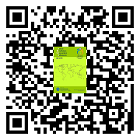PERTUMBUHAN LARVA Aedes aegypti PADA AIR TERCEMAR
(1)
(2)
(3)
(*) Corresponding Author
Abstract
ABSTRACT
Background: Ae. aegypti is the primary vector of dengue viruses. This species proved to lay their eggs in the polluted breeding water. Ae. Aegypti’s eggs also can hatch in the sewage water, but their survival and growth to be pupae and imago is still unknown.
Objective : to understand of Ae.aegypti larvae survivality and growth in various of breeding water such as well water, sewage water, waste-soap water, and chlorinated-water.
Method : four kinds of breeding water were taken from setlement and used directly. The eggs of laboratory strain of Ae. Aegypti were hatched in clean water medium. Larvae reared until of three-days old. As many as 25 healthy larvae were sampled to the four types of water brood. The number of survival larvae, pupae, and imago were observed and calculated everyday for a month. Data was analyzed descriptively and analytically.
Results: Ae. aegypti can survive in the sewage, well, and chlorinated water, respectively. Larval mortality in well and chlorinated water were more than 97%. The normally larval growth was occured in the sewage water brood only, but not in the well and chlorinated water. Larvae can not survive in the waste-soap water.
Conclusion: the clean sewage water can be a good breeding places for Ae. aegypti, so that, its presence should be considered in the vector control program.
Keywords : Ae. aegypti larvae, pupae, imago, polluted water
ABSTRAK
Latar Belakang: Nyamuk Ae. aegypti adalah vektor primer virus Dengue, terbukti mau bertelur pada air perindukan yang tidak bersih. Telur Ae. aegypti dapat menetas pada air comberan, meskipun belum diketahui ketahanan hidup dan pertumbuhan larva menjadi pupa dan nyamuk dewasa.
Tujuan : Mengetahui ketahanan hidup dan pertumbuhan larva Ae.aegypti pada berbagai jenis air perindukan yaitu air sumur gali, air comberan, air limbah sabun mandi dan air bersih.
Metode : Empat jenis air perindukan diambil secara langsung dari pemukiman penduduk dan langsung digunakan.. Telur Ae. aegypti strain laboratorium ditetaskan pada media air bersih. Larva dipelihara hingga berumur 3 hari. Sampel sebanyak 25 ekor larva sehat dimasukkan ke enam jenis air perindukan. Jumlah larva yang bertahan hidup, menjadi pupa dan nyamuk dewasa diamati dan dihitung setiap hari selama 1 bulan. Data ketahanan dan pertumbuhan larva dianalisis secara diskriptif dan komparatif.
Hasil : Larva Ae. aegypti dapat bertahan hidup pada air got, SGL, dan PAM, dengan rerata yang berbeda nyata. Kematian larva pada air SGL dan PAM sangat tinggi (> 97%). Pertumbuhan larva secara normal hanya terjadi pada media perindukan air got. Larva Ae. aegypti tidak dapat tumbuh menjadi pupa pada air SGL dan PAM, bahkan tidak bertahan hidup pada air limbah sabun mandi.
Kesimpulan : Air got yang didiamkan dan jernih menjadi tempat perindukan yang baik bagi Ae. aegypti, sehingga keberadaannya perlu diperhatikan dalam pembersihan sarang nyamuk.
Kata kunci : Larva Ae. aegypti, pupa, nyamuk dewasa, air perindukan tercemar
Full Text:
PDFArticle Metrics
Abstract view : 1559 timesPDF - 1826 times
DOI: https://doi.org/10.26714/jkmi.7.1.2011.%25p
Refbacks
- There are currently no refbacks.
Copyright (c) 2017 Jurnal Kesehatan Masyarakat Indonesia

This work is licensed under a Creative Commons Attribution-NonCommercial-NoDerivatives 4.0 International License.
------------------------------------------------------------------------------------------------------------------------------------------------------------------------------------
 | Jurnal Kesehatan Masyarakat Indonesia ISSN 1693-3443 (print) | 2613-9219 (online) |
Jurnal Kesehatan Masyarakat Indonesia is licensed under a Creative Commons Attribution-NonCommercial-NoDerivatives 4.0 International License.












